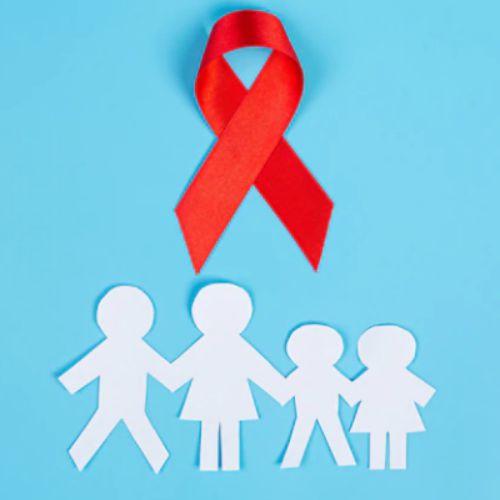–
The number of cases of sexually transmitted diseases is increasing in the world. One of them is having risky sex. Sometimes they end up being infected with venereal disease, as well as HIV which in turn causes AIDS. AIDS is a disease that attacks the human immune system which can lead to death. How how to prevent HIV disease?

What is HIV?
HIV (Human Immunodeficiency Virus) is the virus that causes AIDS (Acquired Immunodeficiency Syndrome). The HIV virus belongs to the lentivirus retrovirus family. The HIV virus has a unique structure. It is circular in shape and has a diameter of about 100 nm. The outer layer of the HIV virus is a lipoprotein with glycoproteins. In the center of the molecule can be distinguished genetic material (two strands of RNA) surrounded by a capsid.
The most frequently asked question is: how does HIV infect? HIV infection can occur through three main routes. The first is sexual contact without using a condom. HIV transmission can also occur through contaminated blood, which enters our circulatory system. The risk increases with blood transfusions and with contaminated syringes. HIV infection can also occur during childbirth or while breastfeeding (from an infected mother to her child).
At this point it should be emphasized that HIV cannot be transmitted through the air. Therefore, if you are with someone who is HIV positive, you don’t have to worry about being infected by sneezing or coughing. Also, you won’t get infected if you come into contact with sweat, tears, or urine (as long as there’s no blood in them).
How to Prevent HIV Disease
Risky sexual behavior increases the risk of HIV infection and, consequently, AIDS. HIV is spread mainly through sexual contact. The virus, which can be found in the blood of a sick person, but also in sperm or vaginal discharge, penetrates the blood of a healthy person through minor damage to the skin or mucosa. The best way to prevent HIV disease is to avoid risky sexual behavior as well as the following signs: loyalty to a partner, avoid drugs, choose a tattoo parlor and piercing carefully.
It should be emphasized that condoms are the only contraceptive that has been proven effective in HIV prevention so far. Therefore, casual sex, ie having sex with someone we do not know well, should only be done using a condom. Otherwise, the risk of transmitting HIV is much greater. It has also been shown to be higher in women than men, because the mucosa of women is easily irritated, and viruses can easily penetrate it.
The only way to ensure that we are not affected is to have an HIV test. If we change partners frequently – such tests should be done from time to time. Similarly, if we have recently engaged in risky sexual behavior – in this case, we should also be screened. HIV testing should be done by anyone who:
- Have had sexual contact with a stranger, an HIV-positive person, a person who has had multiple partners or sexual partners.
- Anyone who has multiple sexual partners or partners.
- Have sex without a condom or with a condom.
- Have had a sexually transmitted disease.
- Have had contact with a person who injects drugs.
- Injectable drugs.
- Doing tattoos or piercings in unsterile conditions.
- Under the influence of the drugs, he loses his temper or consciousness and has no memory of what happened to him.
The more the number of sexual partners, the greater the risk of HIV infection. The best way to avoid getting sick is to stay in a monogamous relationship where both partners are loyal to each other. Of course, for various reasons, such a model of behavior does not satisfy everyone, and that does not mean that such people should adapt to a monogamous relationship model. You can have multiple partners, but by following the rules of safe sex, using condoms, you are less likely to catch the virus. However, the risks are still greater than in a relationship of loyalty to one person.
Injecting drugs is a risk factor HIV infection. Today, thanks to preventive measures, such as the distribution of single-use syringes by volunteers in drug addict communities, the percentage of people infected with HIV in this way is very small. However, such a possibility still existed if the previously used injection equipment was used by someone else.


